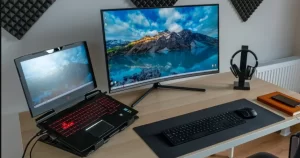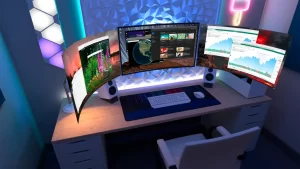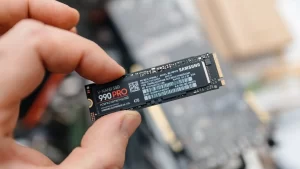Audio plays a crucial role in user experience—whether you’re watching a video, playing a game, attending a video conference, or simply listening to music. But as integral as audio is to modern computing, its underlying components, particularly audio drivers, can sometimes cause unexpected issues.
One frustrating example is when poorly functioning or misconfigured audio drivers cause frequent app freezes. At first glance, it might seem puzzling that a problem related to sound can lock up entire applications. However, the relationship between software, drivers, and system resources is more intricate than it appears. s, and how to fix or mitigate them.
What Are Audio Drivers?
Audio drivers are software interfaces that allow your operating system and applications to communicate with your audio hardware (sound card, chipset, or integrated audio component). These drivers manage everything from sound input and output to more complex tasks like sample rate conversion, multi-channel mixing, and digital audio processing.
Like all device drivers, audio drivers sit between hardware and software. If something in this communication chain breaks down or becomes misaligned, the effects can ripple out and disrupt otherwise unrelated functions—like UI responsiveness or media playback.
How Faulty Audio Drivers Cause App Freezing
1. Audio Driver Bottlenecks and Application Wait States
Many media-based applications—such as video editors, video players, DAWs (Digital Audio Workstations), and games—depend on audio to operate in real time. When an app sends an audio playback request, it expects a timely response from the audio driver. If the driver is slow, unresponsive, or misconfigured, the app may enter a “wait state,” essentially pausing itself until the audio system responds.
If that response is delayed or never comes, the app appears frozen.
2. Conflicts Between Audio Drivers and Other System Resources
Audio drivers sometimes conflict with other device drivers, especially GPU drivers or USB controllers. For instance, if your audio interface is connected via USB and competes with other peripherals for bandwidth or interrupt handling, it could stall data transmission. This can result in stuttering audio, which often corresponds with visual freezing or UI lag.
Such conflicts are common when:
- The motherboard’s chipset drivers are outdated.
- Devices are improperly prioritized in BIOS/UEFI.
- High CPU or I/O usage exacerbates timing issues.
Common Scenarios That Lead to Freezes
A. Opening or Closing Audio-Dependent Applications
Apps that use real-time audio processing—such as video conferencing tools (Zoom, Microsoft Teams), audio production software (Ableton Live, FL Studio), or communication clients (Discord)—initialize audio streams at launch. If your driver has trouble allocating or releasing audio resources, this can cause the app to hang during startup or shutdown.
B. Switching Audio Output Devices
Changing audio outputs (e.g., switching from speakers to Bluetooth headphones) can trigger freezes if the driver doesn’t gracefully handle device handoffs. Some drivers are sensitive to hot-swapping and may temporarily stall while renegotiating the audio stream.
C. High-Resolution Audio Formats or ASIO Conflicts
Using audio interfaces that support ASIO or high-definition sound can complicate driver behavior. ASIO bypasses Windows’ native audio stack for lower latency, but it can conflict with apps using WASAPI or DirectSound. If multiple programs are trying to access audio simultaneously, conflicts may lead to freezes.
Software-Specific Impact
1. Games and Media Players
Games and video players like VLC or Windows Media Player are heavily reliant on seamless audio playback. If a driver fails to deliver sound when prompted, the entire experience can freeze or lag, especially in fullscreen mode.
2. Digital Audio Workstations (DAWs)
DAWs are particularly sensitive to audio latency and driver stability. A glitch or dropout at the driver level can freeze the UI, cause unresponsiveness, or even crash the session. Most DAWs provide buffer size settings that rely directly on how well the audio driver performs.
3. Web Browsers
Even browsers like Chrome or Firefox can be affected. Playing YouTube videos or engaging in online meetings can expose weaknesses in the audio pipeline. If audio initialization fails, browser tabs may freeze or crash.
Common Causes Behind Audio Driver Freezes
- Outdated or Corrupt Drivers: The most frequent culprit. OEM drivers may not be updated regularly, and generic Windows drivers often lack full functionality.
- Driver Conflicts: Multiple audio devices (e.g., HDMI audio from a GPU and onboard Realtek audio) can cause prioritization issues.
- Background Audio Enhancements: Features like spatial sound, loudness equalization, or “audio enhancements” can interfere with basic playback and cause latency spikes.
- Incorrect Sample Rate Settings: Mismatched sample rates between your OS and the application can stall the audio stream.
- Improper Driver Installations: Incomplete driver installs or remnants from old drivers can cause instability.
How to Fix or Prevent Freezing Caused by Audio Drivers
1. Update or Reinstall Audio Drivers
- Visit your motherboard or audio interface manufacturer’s website.
- Download the latest stable driver.
- Uninstall the existing driver via Device Manager.
- Reboot and install the new version.
2. Use Generic or Alternative Drivers
If the OEM driver fails, try using:
- Windows HD Audio Driver (for basic compatibility).
- ASIO4ALL (for low-latency applications, though with caveats).
- WASAPI Exclusive Mode in certain apps to bypass some driver layers.
3. Disable Audio Enhancements
- Right-click the sound icon > Sound settings > Choose output device > Properties.
- Disable all audio enhancements under the Enhancements or Advanced tab.
4. Set Matching Sample Rates
- Ensure the sample rate in your OS audio settings matches what your application expects (commonly 44100 Hz or 48000 Hz).
5. Check for System-Level Conflicts
- Disable unused audio devices (like HDMI Audio if not in use).
- Update chipset and USB drivers to avoid bandwidth conflicts.
- Consider changing the USB port or switching to a powered USB hub for external sound cards.
6. Adjust Latency and Buffer Settings
- In DAWs or pro audio software, increase buffer size to reduce driver stress.
- Use safe mode or minimal audio device access when troubleshooting.



